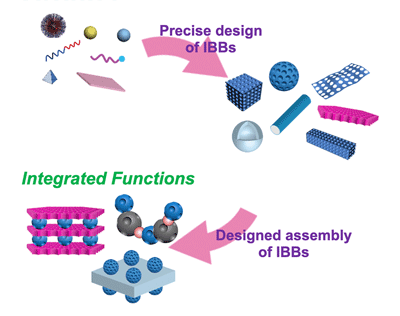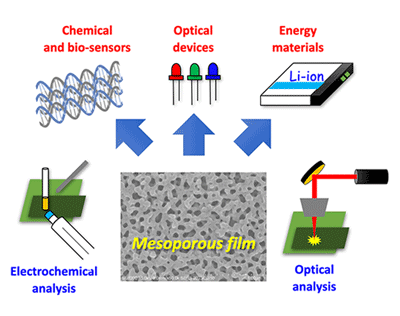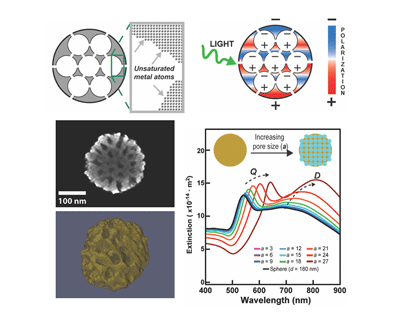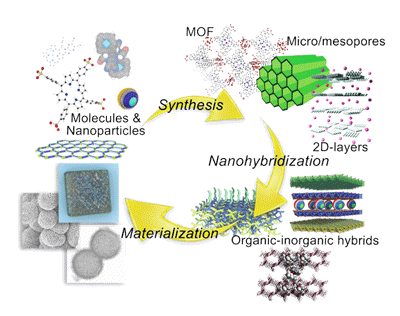 Various inorganic materials with highly-ordered nanoarchitectures can be prepared using a variety of inorganic building blocks (IBBs) as a component. Especially, carefully designed assembly of several types of IBBs can form new hybrids with unique functions, which is caused by integrating the individual IBBs’ properties. The aim of this group is a precise synthesis of IBBs and the subsequent designed assembly for the integration of functions. The synthesized IBBs possess morphological dimensionality and controlled surface nature for the facilitation of their assembly. Each IBBs have controlled physicochemical properties, which lead to significant functions by the assembly. Also, the assembled nanostructured compounds can be utilized as a new IBB to architect hierarchically assembled nanomaterials with multiplicatively integrated functions.
Various inorganic materials with highly-ordered nanoarchitectures can be prepared using a variety of inorganic building blocks (IBBs) as a component. Especially, carefully designed assembly of several types of IBBs can form new hybrids with unique functions, which is caused by integrating the individual IBBs’ properties. The aim of this group is a precise synthesis of IBBs and the subsequent designed assembly for the integration of functions. The synthesized IBBs possess morphological dimensionality and controlled surface nature for the facilitation of their assembly. Each IBBs have controlled physicochemical properties, which lead to significant functions by the assembly. Also, the assembled nanostructured compounds can be utilized as a new IBB to architect hierarchically assembled nanomaterials with multiplicatively integrated functions.
Our Research
Overview
Our group will create novel “inorganic nanosolids” containing internal nanospaces,as unprecedented nanospace materials, and develop several methodologies for their effective integration with the aim of exploiting functions obtained based on the synergistic fusion of various supramolecular, photonic, and magnetic behaviors occurring in nanospace. We will cover a wide range of various porous systems such as metals, carbons, sulfides, phosphides, transition metal oxides, etc. We will efficiently combine ‘machine learning’ with our inorganic synthesis methods to accelerate the optimization of synthetic parameters for the design of target materials, and to select proper patterns of combination of each inorganic block for the integration of materials.


